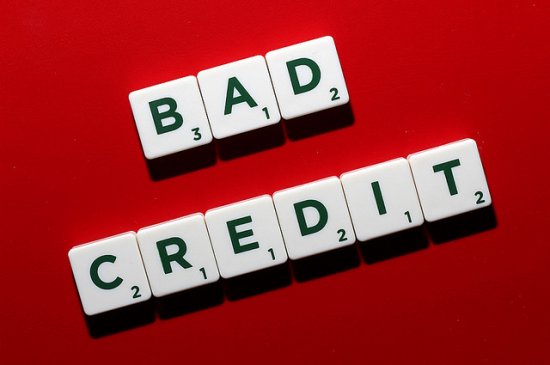 Do you have bad credit?
Do you have bad credit?
Image Source: Flickr User CafeCredit.com
If you don't keep close track of your credit score, the first sign that you have bad credit may come when you get turned down for a loan or new card. People don't always know what defines “bad credit” versus “good credit,” but – particularly after bankruptcy – it’s crucial to understand the difference so that you can focus on establishing a good score.
What Is Good Credit and What Is Bad Credit?
First, know that there is more nuance than simply just “good” or “bad” credit. Credit scores are broken into four broad categories: bad, fair, good and excellent. However, the parameters aren’t hard and fast. Each lender determines what criteria they find acceptable in order to offer credit. Also, if you have no credit, that’s pretty much the same as bad credit as far as most lenders are concerned.
The parameters fall roughly as follows:
- Bad credit: 629 and below
- Fair credit: Between 630 and 689
- Good credit: Between 690 and 719
- Excellent credit: Higher than 720
Good Credit Is Subjective and Interpreted by the Creditor
What FICO score is good enough to qualify for credit is up to the creditor – and many will accept credit that’s not in the “good” range. It depends on what level of risk the creditor considers worthwhile, among other factors.
For instance, if they are offering credit with a high interest rate, the lender or creditor will often accept people with low credit scores because those high interest rates provide a built-in, higher profit margin. Thus, creditors can be more liberal about who they offer credit to.
Some consumers mistakenly interpret the phrases “subprime loan” and “subprime credit card” to mean that they're being offered a low interest rate. However, subprime actually means that the consumer applying for credit has a “subprime” score, which means “less than good.”
Be aware that just because you were accepted for a loan or credit card, it doesn’t necessarily mean that you have “good” credit – it just means that based on your profile, you fall within the acceptable risk category for that specific creditor. Subprime credit is very costly for consumers.
How Can You Get “Good” Credit?
Having a good credit (or excellent, preferably) is the best route to more affordable financing, lower interest credit, and paying less for services that are credit-dependent, such as auto insurance and some utilities. Here are some simple steps to take:
#1 Find out what your score is. Pull all three reports from all three reporting agencies because the scores will differ slightly.
#2 Clean up your credit reports by having erroneous accounts and incorrect information removed.
#3 Pay your bills on time – always.
#4 Check out this article on how to improve your score by 100 points.
Improving your credit score is a process of slow and consistent behaviors that demonstrate you can use credit responsibly and are trustworthy. There is no overnight fix for bad credit, and anyone who tells you that there is isn’t being honest.
It’s important to get and maintain good credit so that you won’t overpay for services, are able to purchase a home and car at a reasonable interest rate when you need to, and so you won’t be refused job opportunities because of your credit score.
To find out more about improving your credit rating after bankruptcy, contact Credit Score Keys. Call us at 919-495-2365 to learn more about getting your FICO score back on track. Bankruptcy isn’t an end; it’s the beginning to a brighter financial future.
